In recent years, white tea has been gaining popularity rapidly, a phenomenon often attributed to health reasons. Of the various types of traditional white teas, the highest grade is Silver Needles (白毫银针), teas that are made from buds only.
Traditional Silver Needles has the following characteristics:
i) Grown in Fuding or Zhenghe- both in Northern Fujian
ii) Made from Dabaihao or Dabaicha cultivars
iii) Processed by withering and baking (Fuding) or withering and sun-drying (Zhenghe)
iv) Harvested in spring only
v) Made from 1 bud to 1 leaf with the buds extracted
vi) Strict picking requirements- a list of 10 “do not picks”
vii) Hand-picked
As these characteristics are rather restrictive, there have been newer variants of ‘Silver Needles’ and ‘White Peonies’ hopping on the bandwagon.
We will look at a traditional Fuding Silver Needles as opposed to one is virtually diametrically opposed to it:
i) Grown outside of Fujian (outside of China even)
ii) Made from undisclosed cultivar
iii) Harvested in summer
As for the picking requirements, we will get to that later.

While I caution against ‘tasting with your eyes’- a topic for a post I intend to write in the next couple of weeks once I get my hands on Exhibit A- the dry leaves tell a tale of consistent appearances that is indicative of strict picking requirements versus one that is not.
The individual leaves provide a contrast between the size of the leaves. The traditional Silver Needles- again placed on the right- is bigger and sturdier than the other one.
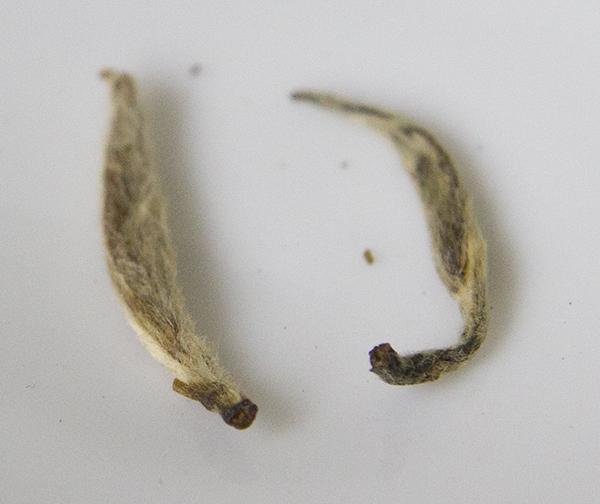
For comparison, I infused 4g each into identical glass gaiwans at 80⁰C.
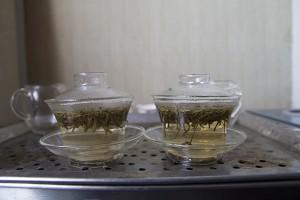
At about 3 minutes infusion time, the contrast widens.
The mystery ‘silver needles’ is remarkably dark, White Peony-esque. Again, nothing conclusive about quality, just showing a visual contrast.
The wet leaves reveal more though.
Having a bit of broken bits is normal, well-kept leaves are
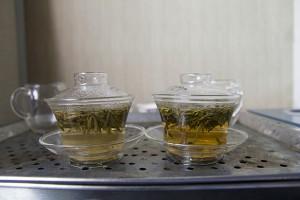
But the disparity in the appearance of the wet leaves when it is meant to be a bud only tea is unexpected for the mystery ‘silver needles’ on the right.
The individual wet leaves also show a disparity in the sturdiness of the leaves.
What does this matter, taste is what matters isn’t it?
Well, I can’t show you taste but here’s a brief description:
i) The traditional Silver Needles is brisk with a sweet aftertaste. Herbaceous, melon-like taste
ii) Mystery ‘silver needles’ is bitter with pronounced astringency and no briskness
The Science behind Tradition
The restrictive traditional definition led some quarters to claim innovation behind the newer variants of ‘silver needles’, if nothing else to maximize their own profit and hop on the burgeoning demand for white tea.
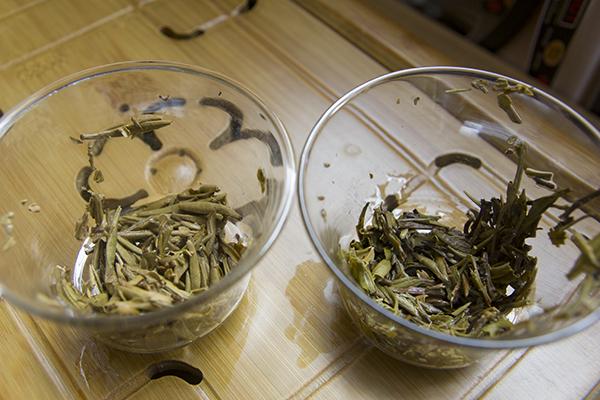
Fundamental to the taste as well as health benefits of white tea is the content of Theanine.
What gives white tea its brisk refreshing taste is the high theanine content coupled with relatively lower catechin content as catechin causes astringency.
Cultivar
The Dabaicha cultivar- used in Fuding white tea- is comparatively higher in theanine content.
Using 1 bud 2 leaves ratio of spring tea as a comparison:
Fuding Dabaicha: Theanine content- 4.3%, catechin- 11.4%
Compared with Mengku Dayecha (a cultivar that is suited for black tea and Puer)
Theanine content- 1.7%, catechin 18.2%
While the desired characteristics in Puer do not include high Theanine content- at least from a taste perspective- it is crucial for white tea.
Harvest Season
Spring teas are considered the highest in nutritional content compared with other seasons. The tea plant stops budding at temperatures below 10⁰C but it continues to accumulate nutrients. Hence the spring teas include the nutrients accumulated during the winter months when no tea leaves bud.
In contrast, summer teas are the generally the lowest in value because the heat causes the leaves to bud quickly. The harvested leaves are pronounced in astringency as the theanine content is notably lower.
While summer teas can be made into black tea- the hot and humid weather makes it perfect for the ‘oxidation’ stage of producing black teas- for green and white teas especially, teas produced are noticeably lower in quality.
Others
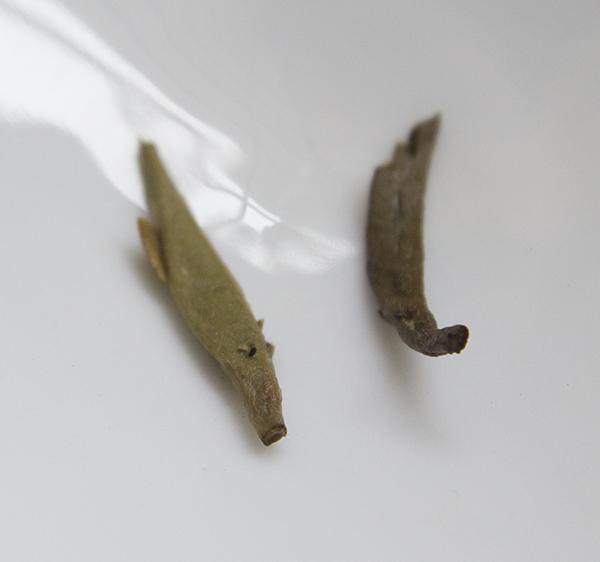
Pictures do tell quite a bit but there is nothing like doing a side-by-side comparison of this.
While it may not always be the case, in this instance, I can safely say tradition wins.
